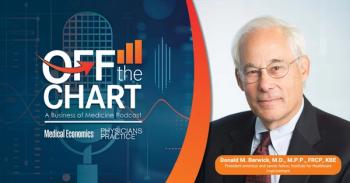
Mega-groups Present Opportunities for Small Practices
Here are 10 advantages of joining a physician-owned mega group.
As the transition from fee-for-service to pay-for-performance type payment models continues to gain traction, and the concept of "population health" management continues to evolve, consolidation in the healthcare market will likely remain active. Hospitals have historically been the key players in this consolidation because they’ve had the capital required to build integrated delivery systems and offer attractive employment agreements to physicians.
While hospitals have been grabbing most of the front-page headlines, consolidations among physician-led groups, commonly referred to as "mega-groups," have also seen significant growth.
The following are some of the advantages of joining a physician-owned mega-group, specifically those with broad ownership and governance shared by the group at-large:
1. Financial independence
A major advantage of a mega-group is that the group has no direct financial ties to hospitals or other large established integrated delivery systems. The mega-group, however, can enter into separate joint venture-type agreements.
2. Autonomy
The independent practices (called “divisions”) that join mega-groups are still able to retain a significant degree of autonomy as to how they practice within their own offices.
3. Cost savings
Divisions benefit from the establishment of a central business office that provides billing and collections and other administrative services at a reduced per-provider cost. Mega-groups can also realize savings through negotiating larger group purchasing discounts.
4. Risk sharing
As both government and commercial payers look for partners to share risk through new risk-based payment models, such as pay-for-performance, accountable care organizations, and bundled payments, only those practices with adequate financial resources will likely have the opportunity to participate and share in any savings and/or enhanced fee-for-service reimbursements that may be realized. Mega-groups can usually assume some level of financial risk, which allows them to “dip their feet in the water" and participate in new payment models.
5. Income allocation
Divisions are credited with the income they generate, less their divisional expenses and a share of the mega-group's common overhead. This allows divisions to retain a significant amount of their divisional profit.
6. Hospital partnerships
As fee-for-service transitions to performance-based payment models, physicians and hospitals will likely find themselves working more collaboratively. They will continue to form alliances through joint ventures and other similar arrangements. A mega-group’s size allows for a more even playing field when negotiating such arrangements.
7. Lower tech costs
In order to remain competitive, practices have to continue to invest in new technologies, such as EHRs and more robust practice management systems. A mega-group’s per-provider cost for these new technologies, as compared to a smaller practice, will likely be less since the cost is shared by more providers. Mega-groups can typically also negotiate discounted rates for software licenses, training, and support.
8. Better financing
Since mega-groups have sizeable assets, revenues, and cash flows, banks tend to view them more like "businesses" than simply medical practices. For this reason, mega-groups can usually obtain more financing at more favorable rates and terms than small or mid-size practices.
9. Access to professional management
Mega-groups have been successful in bringing in professional management to help relieve the ever-increasing administrative burden being placed on medical practices. Many mega-groups even form separate management service organizations (MSOs). In an MSO arrangement, the mega-group enters into an agreement with the MSO, whereby the MSO provides a full range of administrative services to the mega-group at an agreed-upon fee.
10. Investment opportunities
As practices continue to grow in size, private equity continues to look for opportunities to invest in healthcare. For example, private equity continues to look for opportunities to partner with mega-groups by investing in joint venture MSOs (JVMSOs). A JVMSO that manages a mega-group, and potentially other practices, would provide the needed financial resources to help the mega-group grow. This would ultimately help the JVMSO also grow and likely increase in value. This can provide an opportunity for the private equity and mega-group physician investors to ultimately sell all, or a portion, of their JVMSO investment at a potential gain.
As the consolidation trend in healthcare continues, medical practices will likely find ways to work together and form alliances. Joining a mega-group will continue to give physicians an option other than selling to or seeking employment with a hospital. While this option has associated costs and inherent risks, in most cases the advantages of joining a mega-group clearly outweigh the disadvantages.
Lee Ferber, CPA, is a partner and co-chair of the Health Care Consulting Group at Gettry Marcus CPA, P.C., an accounting, tax and consulting firm in New York. E-mail him at Lferber@gettrymarcus.com.
This article originally appeared in the October 2014 issue of Physicians Practice.
Newsletter
Optimize your practice with the Physicians Practice newsletter, offering management pearls, leadership tips, and business strategies tailored for practice administrators and physicians of any specialty.











